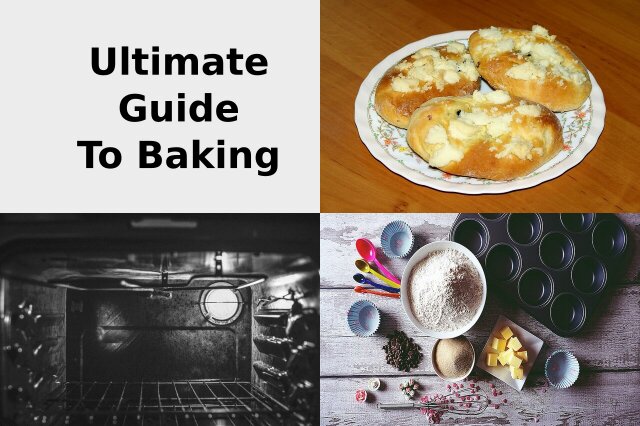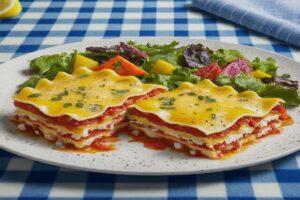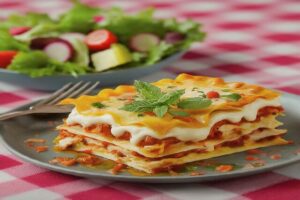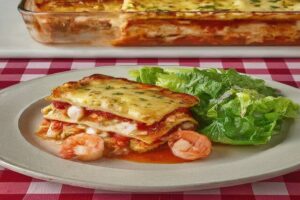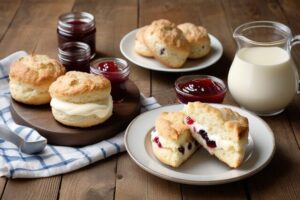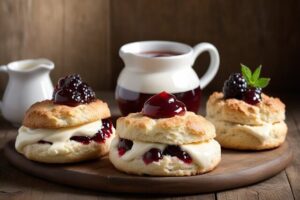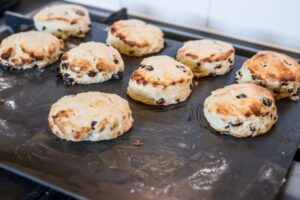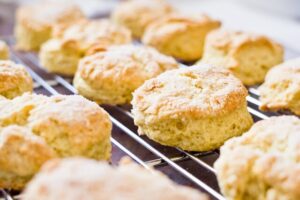Baking refers to a specific method of heating food using dry heat in an enclosed space, typically an oven, but also ovens built from hot stones or coals.
Mastering the Art of Baking: A Guide to Basic and Advanced Techniques.
Are you ready to take your baking skills to the next level?
Whether you’re a beginner or a seasoned baker, mastering the art of baking requires a combination of basic and advanced techniques.
In this comprehensive guide, we’ll demystify the world of baking and provide you with the knowledge and skills needed to create show-stopping treats.
From measuring ingredients accurately to understanding the science behind baking, we’ll cover everything you need to know to become a baking expert.
Discover what baking is, the crucial role of different ingredients, learn to perfect the art of mixing and kneading, and explore various baking methods that will elevate your creations.
This guide is designed to be your go-to resource, with step-by-step instructions, helpful tips, and troubleshooting advice for common baking challenges.
Whether you’re interested in mastering classic favourites like bread and cookies or tackling more complex creations like pastries and cakes, this guide has you covered.
So, grab your apron, preheat the oven, and join us on a journey to unlock the secrets of baking. Get ready to wow your friends and family with your newfound baking prowess!
[lwptoc]
What Is Baking.
Baking is a method of preparing food that uses dry heat, typically in an oven, but can also be done in hot ashes, or on hot stones.
The most common baked item is bread, but many other types of foods can be baked, such as cakes, biscuits, scones, cookies, pies, pastries, and muffins.
Heat is gradually transferred “from the surface of cakes, cookies, and bread to their centre.
As heat travels through, it transforms batters and doughs into baked goods and more with a firm dry crust and a softer centre.
The dry heat of baking changes the form of starches in the food and causes its outer surfaces to brown, giving it an attractive appearance and taste.
The browning is caused by the caramelisation of sugars and the Maillard reaction.
Maillard browning occurs when “sugars break down in the presence of proteins.
Because foods contain many different types of sugars and proteins, Maillard browning contributes to the flavour of a wide range of foods, including nuts, roast beef, and baked bread.”
The moisture is never entirely “sealed in”, meaning over time, an item being baked will become dry.
Baking is a science, and it is important to follow recipes carefully.
However, it is also an art, and bakers can experiment with different ingredients and techniques to create their own unique recipes.
Here are some of the benefits of baking:
- Baking is a fun and rewarding hobby.
- Baking can be a creative outlet.
- Baking can help you learn about different ingredients and cooking techniques.
- Baking can be a way to bond with family and friends.
- Baking can be a way to save money on food costs.
- Baking can be a way to control the ingredients in your food.
Understanding the basics of baking.
Baking is a science as much as it is an art. To become a successful baker, it’s essential to understand the basic principles that govern the baking process.
One of the first things you need to grasp is the importance of accurate measurements.
Baking is all about precision, so invest in a set of measuring cups and spoons to ensure your ingredients are proportioned correctly.
Next, it’s crucial to understand the role of different ingredients in baking.
Flour, sugar, eggs, butter, and leavening agents all play a part in creating the perfect baked goods.
Each ingredient has a specific purpose and contributes to the texture, flavour, and structure of your creations.
Understanding these roles will help you make informed decisions when modifying or experimenting with recipes.
Before we discuss the baking ingredients and their roles, let’s take a look at some of the baking types.
Baking definition and type.
As already covered, baking is a method of cooking food that uses dry heat, typically in an oven.
It is one of the oldest and most common cooking methods, and can be used to cook a wide variety of foods, including bread, cakes, cookies, pies, pastries, muffins, and more.
There are many different types of baking, but some of the most common include:
- Bread baking:
- Bread baking is the process of making bread, which is a staple food for many cultures around the world.
There are many different types of bread, including white bread, whole wheat bread, rye bread, sourdough bread, and more.
- Cake baking:
- Cake baking is the process of making cakes, which are sweet desserts that are often decorated with frosting, icing, or other toppings.
There are many different types of cakes, including chocolate cake, vanilla cake, carrot cake, red velvet cake, and more.
- Biscuit/Cookie baking:
- Cookie baking is the process of making biscuits or cookies, which are small, sweet treats that are often baked on baking sheets.
There are many different types of cookies, including chocolate chip cookies, oatmeal cookies, sugar cookies, and peanut butter cookies.
- Pie baking:
- Pie baking is the process of making pies, which can be either sweet or savoury, they are typically made with a crust and a filling.
There are many different types of pies, including fruit pies, custard pies, and meat pies.
- Pastry baking:
- Pastry baking is the process of making pastries, which are baked goods that are made with dough or batter.
There are many different types of pastries, including croissants, pies, danishes, and muffins.
- Quiche baking:
- Quiche baking is the art of making quiches, which are savoury pies that are typically filled with eggs, cheese, and vegetables.
- Muffin baking:
- Muffin baking is the art of making muffins, which are quick breads that are typically baked in muffin tins.
Muffins can be flavoured with a variety of different ingredients, such as cheese, fruit, nuts, and chocolate chips.
- Scone baking:
- Scone baking is the art of making scones, which are quick breads that are typically baked on a baking sheet.
Scones can be flavoured with a variety of different ingredients, such as fruit, nuts, and cheese.
- Decorative baking:
- Decorative baking is the process of making baked goods that are decorated with intricate designs.
This type of baking is often used to make cakes, cookies, and cupcakes for special occasions.
- Gluten-free baking:
- Gluten-free baking is the process of making baked goods that do not contain gluten.
This type of baking is often used by people with celiac disease or gluten intolerance.
- Vegan baking:
- Vegan baking is the process of making baked goods that do not contain any animal products.
This type of baking is often used by people who follow a vegan diet.
No matter what your interests are, there is a type of baking that you can enjoy.
Baking can be a fun and rewarding hobby, and it is a great way to learn about different ingredients and cooking techniques.
Now you know the baking definition and types, let’s take a look at some baking tools and equipment that you are going to need.
Must-have baking tools and equipment.
Equipping yourself with the right tools is essential for successful baking.
Here are some must-have items that every baker should have in their kitchen:
- Mixing bowls:
- A set of mixing bowls in various sizes will come in handy for mixing ingredients, whisking, and storing prepped ingredients.
- Measuring cups and spoons:
- Accurate measurements are crucial in baking, so invest in a set of reliable measuring cups and spoons.
- Oven thermometer:
- To ensure your oven is at the correct temperature, an oven thermometer is a must-have tool.
- Baking pans and sheets:
- Different types of baking pans and sheets are necessary for various recipes.
Invest in quality pans that distribute heat evenly and are easy to clean. - Muffin tins:
- Muffin tins are baking pans with multiple cups or molds designed to bake muffins, cupcakes, and other small baked goods.
- Cooling racks:
- Cooling racks allow air to circulate around your baked goods, preventing them from becoming soggy.
- Silicone baking mats:
- These non-stick mats are a great alternative to parchment paper and ensure easy release of your baked goods.
- Spatula:
- A spatula is used for scraping bowls, folding ingredients, and spreading batter.
- Whisk:
- A whisk is a versatile tool that can be used for mixing dry ingredients, beating eggs, and whipping cream.
- Pastry cutter:
- A pastry cutter is used to cut butter or shortening into flour for making pie crusts and other pastries.
Look for a cutter with sharp blades and a comfortable grip. - Electric mixer:
- An electric mixer makes mixing and whipping ingredients much easier and faster.
Look for a stand mixer with multiple attachments for different tasks. - Rolling pin:
- A rolling pin is used for rolling out dough for pies, cookies, and pastries.
- Pastry brush:
- A pastry brush is used for brushing egg wash, melted butter, or glaze onto baked goods.
Having these tools and equipment will make your baking experience more enjoyable and lead to better results.
Now that the tools and equipment have been covered, let’s dive into the baking ingredients and their job in the baking process.
Essential baking ingredients and their roles.
To become a master baker, it’s crucial to understand the roles of essential baking ingredients.
Here are some of the most commonly used ingredients and their functions:
- Flour::
- Flour provides structure and stability to baked goods.
Different types of flour, such as plain (all-purpose), bread flour, and cake flour, have varying protein contents, which affect the texture of your creations.If you’re looking to expand your flour selection, add the following options to your pantry:
- Self Raising Flour
Self-rising flour is flour that has baking powder and salt added to it.
It is found on supermarket shelves in Aus, NZ and the Uk.
Recipes that call for self-rising flour usually don’t list additional baking powder or salt in the ingredients.You can make your own by combining 1 cup plain/all-purpose flour, 1½ teaspoons baking powder and ¼ tsp fine salt.
The leavening power of the baking powder is mixed evenly throughout the flour.
You will automatically get that nice rise out of your baked goods every time you use self rising flour. - Whole Wheat Flour
A denser, healthier replacement for plain/all-purpose flour. - Bread Flour
The higher protein content in bread flour works great when used for chewy, yeast bread. - Cake Flour
The lower protein content in cake flour works great to make light, spongey cakes. - Gluten-Free Flours
Nut and seed flours, like almond flour, coconut flour, oat flour, and other gluten-free options are great for allergy-friendly baking.
- Self Raising Flour
- Sugar:
- Sugar not only adds sweetness but also contributes to browning and texture in baked goods.
It helps retain moisture and adds tenderness to the final product. - Eggs:
- Eggs act as binders, adding structure and richness to baked goods.
They also contribute to leavening and moisture. - Butter:
- Butter adds flavour and richness to baked goods.
It also helps with leavening and contributes to the texture of your creations. - Leavening agents:
- Baking powder and baking soda are leavening agents that help your baked goods rise.
They react with acidic ingredients to produce carbon dioxide, creating air bubbles that make your treats light and fluffy. - Salt:
- Salt enhances the flavour of baked goods and helps balance the sweetness.
Understanding how these ingredients work together will empower you to create delicious and well-balanced bakes.
Let’s move on to the basic baking techniques.
Mastering basic baking techniques.
Now that you have a solid foundation in the basics of baking, let’s dive into mastering some essential techniques.
These techniques form the building blocks of many recipes and will help you create consistent and impressive results.
- Mixing:
- Proper mixing techniques ensure that your ingredients are evenly distributed and incorporated.
The creaming method, muffin method, and rubbing-in (biscuit) method are three different ways to mix ingredients for baking.
Each method is used to create a different texture in the finished product.
- Creaming method:
The creaming method is used to make cakes, cupcakes, and other baked goods with a light and fluffy texture.It involves creaming together the butter and sugar until they are light and fluffy, then adding the eggs one at a time.
Finally, the dry ingredients are folded in.
- Muffin method:
Also known as the quick bread method.This method is used to make muffins, quick breads, and other baked goods with a moist and dense texture.
It involves combining the dry ingredients in one bowl and the wet ingredients in another bowl.
The wet ingredients are then added to the dry ingredients and mixed until just combined. - Rubbing-in method:
Also known as the Biscuit method.
This method is used to make biscuits, scones, and other baked goods with a flaky texture.It involves cutting cold butter into the dry ingredients until the mixture resembles coarse crumbs.
Then, the liquid ingredients are added and mixed until the dough just comes together.Here is a table that summarizes the key differences between the creaming method, the muffin method, and the biscuit method:
Method Order of mixing Texture Creaming Butter and sugar creamed together, then eggs added one at a time, then dry ingredients folded in. Light and fluffy. Muffin Dry ingredients combined in one bowl, wet ingredients combined in another bowl, then wet ingredients added to dry ingredients and mixed until just combined. Moist and dense. Rubbing-in
(Biscuit)Cold butter cut into dry ingredients until mixture resembles coarse crumbs, then liquid ingredients added and mixed until dough just comes together. Flaky Which method you use will depend on the type of baked good you are making and the desired texture.
- Creaming method:
- Kneading:
- Kneading is a technique primarily used in bread baking to develop gluten and create a desirable texture.
The kneading process involves stretching, folding, and pressing the dough to strengthen its structure.
- Folding:
- Folding in, is a gentle mixing technique used to incorporate delicate ingredients, such as whipped egg whites or melted chocolate, into a batter or dough.
It helps maintain airiness and prevents overmixing.
- Beating is an important mixing technique that can be used in many cooking and baking applications.
The aim of beating is to mix ingredients together by incorporating air, adding volume, and creating a smooth and uniform mixture.This method can be used when making batters, doughs, sauces, custards, and more.
- Beating is an important mixing technique that can be used in many cooking and baking applications.
Mastering these basic techniques will give you a solid foundation to build upon as you explore more complex recipes.
Baking for beginners: Simple and foolproof recipes
If you’re new to baking, starting with simple and foolproof recipes is a great way to build confidence in the kitchen.
Here are a few beginner-friendly recipes to get you started:
These recipes will help you develop your skills and build a repertoire of go-to recipes that you can share with friends and family.
Taking your baking skills to the next level: Advanced techniques.
Once you’ve mastered the basics, it’s time to challenge yourself with more advanced techniques.
These techniques will push your skills to new heights and allow you to create impressive and intricate baked goods.
- Pâte à Choux:
- Pâte à Choux is a versatile dough used to create pastries like cream puffs, éclairs, and profiteroles. Mastering this dough opens up a world of possibilities for elegant and delicious desserts.
- Laminated Dough:
- Laminated dough is used to create flaky pastries like croissants, danishes, and puff pastry.
The process involves layering butter and dough to create distinct layers that result in a light and airy texture. - Cake Decorating:
- Learning various cake decorating techniques, such as piping, frosting, and fondant work, allows you to create stunning cakes for special occasions.
These advanced techniques require patience and practice, but the results are well worth the effort.
Troubleshooting common baking problems.
Even the most experienced bakers encounter challenges in the kitchen.
Knowing how to troubleshoot common baking problems will help you overcome obstacles and achieve consistent results.
- Flat Cakes:
- Flat cakes can be the result of overmixing, expired leavening agents, or incorrect oven temperature.
Ensure you follow mixing instructions and check the freshness of your ingredients.
- Dry Baked Goods:
- Dry baked goods are often caused by overbaking.
Keep a close eye on your creations and remove them from the oven as soon as they are cooked through.
- Soggy Bottoms:
- Soggy bottoms can be avoided by using a baking pan with proper ventilation or placing your baked goods on a cooling rack immediately after removing them from the oven.
By understanding common baking problems and their solutions, you’ll be able to troubleshoot and adapt your recipes as needed.
Conclusion: Embracing the joy of baking.
Congratulations! You’ve now embarked on a journey to master the art of baking.
By understanding the basics, equipping yourself with the right tools, and practicing various techniques, you’ll be able to create delectable treats that will impress friends and family.
Remember, baking is not just about following a recipe—it’s about embracing the joy and creativity that comes with it.
So, put on your apron, preheat the oven, and let your imagination run wild.
With this guide as your go-to resource, you’ll be well on your way to becoming a baking expert.
Happy baking!
